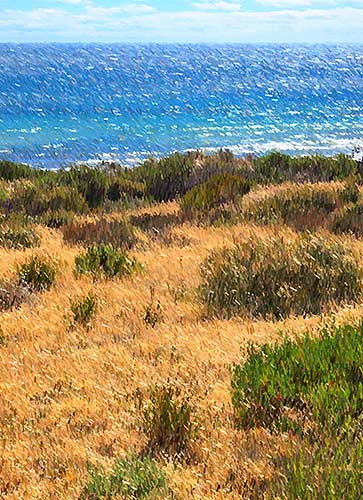
|
Monthly Display - February 2024 - Page 1 (of 14)
|
Computer Paintings Based on Photographs from Hallett Cove Conservation ParkThis month’s display is a selection of computer 'paintings' that were created from photographs that I took at Hallett Cove Conservation Park, a region of native coast land south of Adelaide. Hallett Cove Conservation Park has a number of interesting geological features, and has a marvellous atmosphere of freedom about it. It is a favourite place for me to go to and walk around in. The area feels raw and free, and ancient, yet very much 'immediate'. There is little shade for visitors to the park, so visitors need to protect themselves from too much sun exposure, and make sure they carry some drinking water. |

|
Following are small images from each page in this display. Click on an image, or its title, to go to a page with proper reproductions and more details about the images on that page. Once you are looking at the pages/images in more detail, you can use the ‘prev’ and ‘next’ links (at the top and bottom of each details page) to go to the previous or next pages in the monthly display, or return to this monthly display overview page. |
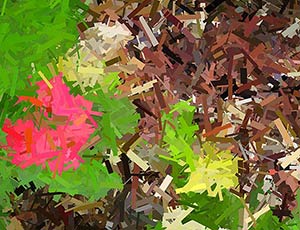
|

|
|
Page 2 - My Painting Program |
Page 3 |
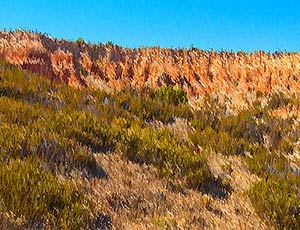
|
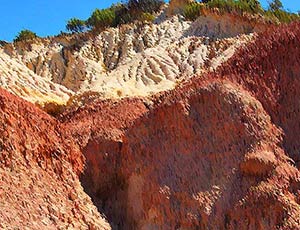
|
|
Page 4 |
Page 5 |
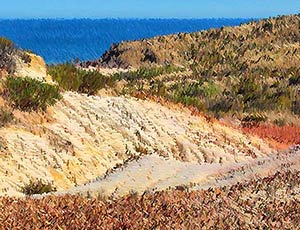
|
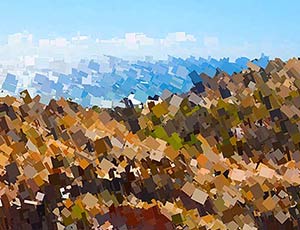
|
|
Page 6 |
Page 7 |
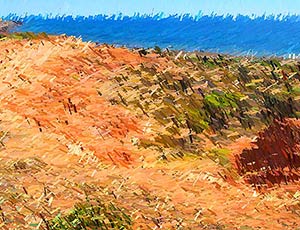
|
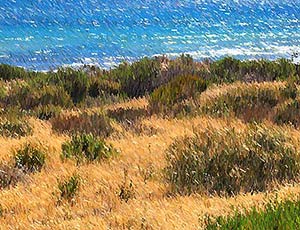
|
|
Page 8 |
Page 9 |

|

|
|
Page 10 |
Page 11 |

|

|

|
|
|
More Information: Through the development of these images, I added a number of features to my computer program, mainly to do with manipulating the colours being read from the loaded photographs, and controlling the orientation of the rectangles being applied (hopefully you can get a better understanding of this when you see the examples on the first page). As the operator of my program, I was always making decisions about which computer process to use, the parameters applied to each process used, and whether the results worked well enough to keep, or 'undo'. So, each image still reflects my artistic understanding and sense of creativity. All of the images shown in this month's display are selections made from a range of multiple saved results that use the same photograph as their basis, but use different experiments or combinations of processes to achieve those different results. An important part of the whole process was reviewing the ranges of results for the version (or versions) that felt most interesting/successful. Sometimes further experiments were made to see if I could get closer to a specific kind of result. I have a simple counter in my program that adds up the number of elements applied to each image, as each image is developed. The number of elements applied to these images certainly varied from one image to another, but were roughly in the range of about 120,000 to over one million elements. The images produced by my computer painting program were quite large, typically about 6,200 pixels x 3,600 pixels in size (enough resolution to print well to poster sizes). They do look more impressive when viewed larger than the images reproduced here in my monthly display. I am not trying to deceive the viewer into thinking that these images are genuine paintings. The results I was getting from my abstract images development program, tend to look like they are paintings, but that was not the purpose behind developing these images - it was just the way they looked when I was happy with them. As images, these computer-based constructions seem to radiate a better sense of presence than the original photographs used to create these images. They also seem to present a better sense of the real scenes' colours than the original photographs do. I think this is because locally discreet colours are applied to larger shape areas, and these contrast more with other similar areas of slightly different colours. |
|
Monthly Display - February 2024 - Page 1 (of 14)
|